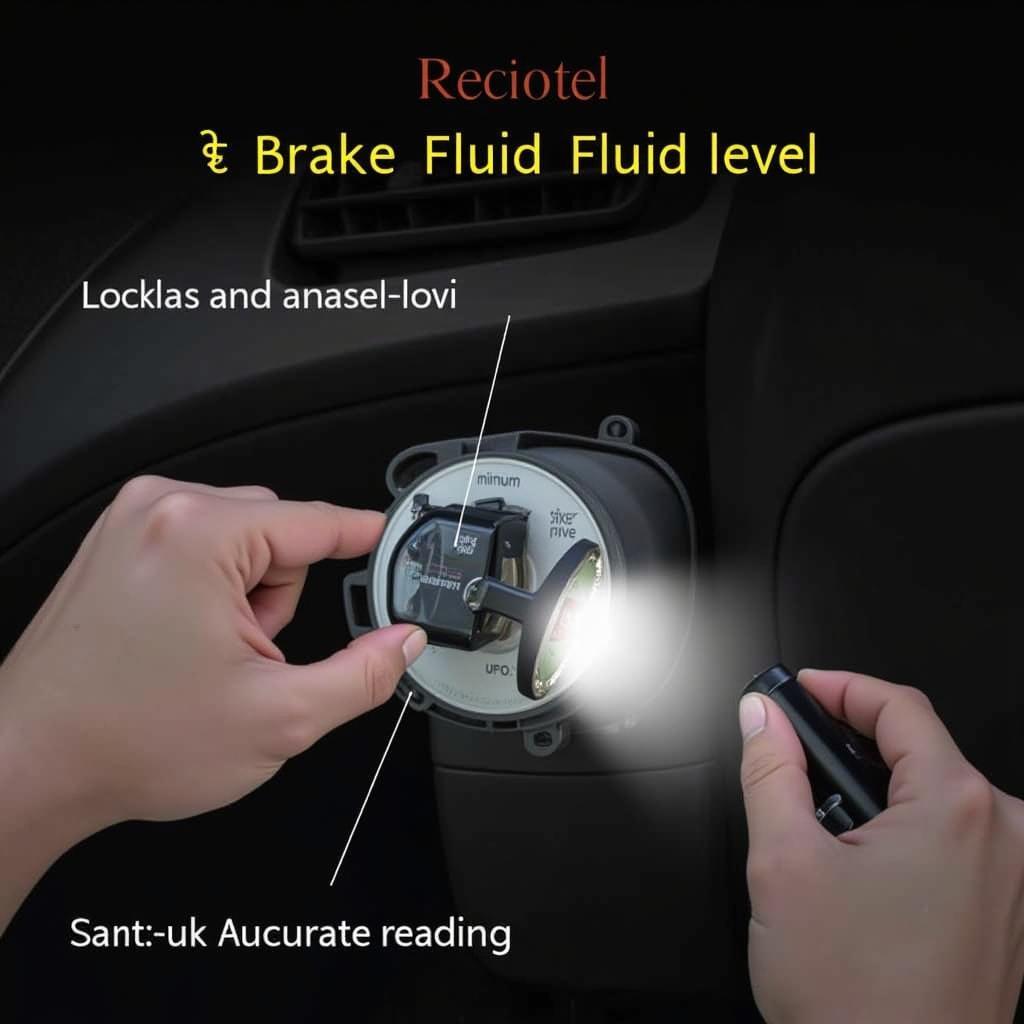The 2016 brake system warning light can be a jarring sight, signaling potential issues ranging from low brake fluid to more serious problems. Understanding what triggers this warning and how to address it is crucial for maintaining your vehicle’s safety and performance. This article provides a comprehensive guide to troubleshooting and resolving the dreaded 2016 brake system warning.
Understanding the 2016 Brake System Warning Light
The brake system warning light is designed to alert you to several potential problems. It can illuminate for various reasons, including low brake fluid, a malfunctioning parking brake, or issues with the anti-lock braking system (ABS). Ignoring this warning could lead to reduced braking performance and dangerous driving conditions.
Common Causes of a 2016 Brake System Warning
-
Low Brake Fluid: This is the most common cause. Brake fluid is essential for transferring force from the brake pedal to the brake pads. A leak in the brake lines or worn brake pads can lead to low fluid levels.
-
Engaged Parking Brake: Sometimes, the warning light simply indicates that the parking brake is engaged. This is an easy fix – simply disengage the parking brake.
-
ABS Problems: The Anti-lock Braking System (ABS) prevents wheel lockup during hard braking. A malfunctioning ABS module or sensor can trigger the warning light.
-
Worn Brake Pads: As brake pads wear down, the brake fluid level drops. Severely worn pads can trigger the warning light.
 2016 Brake System Warning – Checking Brake Fluid Level
2016 Brake System Warning – Checking Brake Fluid Level
Diagnosing the Problem
Start by checking the simplest solutions first. Ensure the parking brake is fully disengaged. Next, check the brake fluid level in the reservoir. If it’s low, top it off with the correct type of brake fluid specified in your owner’s manual.
Checking Your Brake Fluid
Locate the brake fluid reservoir under the hood. It’s usually a clear plastic container with “brake fluid” marked on it. Check the fluid level against the minimum and maximum markings.
Inspecting Your Brake Lines
Visually inspect the brake lines for any signs of leaks or damage. Look for wet spots or dripping fluid around the brake calipers, hoses, and the master cylinder.
When to Seek Professional Help
If the brake fluid level is consistently low despite topping it off, or if you notice any leaks or damage to the brake lines, it’s crucial to seek professional help immediately. A qualified mechanic can diagnose and repair any underlying issues with your brake system.
What if the Light Stays On?
If the warning light remains on even after checking the fluid level and parking brake, it’s likely a more complex issue, possibly related to the ABS system. This requires specialized diagnostic tools and expertise.
“Ignoring a persistent brake system warning light is akin to ignoring a ticking time bomb,” warns John Davis, a certified automotive technician with over 20 years of experience. “Your brakes are your vehicle’s most important safety feature, and neglecting them could have serious consequences.”
Remote Diagnostics and Software Solutions
Modern vehicles often rely on sophisticated software and electronic systems. In some cases, the 2016 brake system warning could be triggered by a software glitch or a faulty sensor. Remote diagnostics and software updates can sometimes resolve these issues without requiring a physical visit to a mechanic.
“Remote diagnostics are becoming increasingly important in the automotive industry,” adds Maria Sanchez, a leading expert in automotive software engineering. “They offer a convenient and efficient way to diagnose and address certain vehicle issues, including brake system problems.”
Conclusion
Addressing a 2016 brake system warning promptly is vital for your safety. Start with the simple checks, like the parking brake and fluid level. If the problem persists, seek professional help immediately. Don’t delay ensuring your brakes are in optimal condition. Remember, your safety and the safety of others on the road depend on a properly functioning brake system.
FAQ
-
What is the most common cause of a 2016 brake system warning light? Low brake fluid is the most frequent culprit.
-
Can I drive with the brake warning light on? It’s highly discouraged. It indicates a potential problem that could compromise your braking ability.
-
How often should I check my brake fluid? It’s a good practice to check your brake fluid level monthly.
-
What type of brake fluid should I use? Consult your owner’s manual for the correct type of brake fluid for your 2016 vehicle.
-
How much does it cost to fix a brake system problem? The cost varies depending on the specific issue, but addressing it promptly can prevent more expensive repairs down the road.
-
What is ABS? ABS stands for Anti-lock Braking System, which prevents wheel lockup during hard braking.
-
Can remote diagnostics fix a brake system problem? In some cases, yes. Software glitches or sensor issues can sometimes be resolved remotely.
